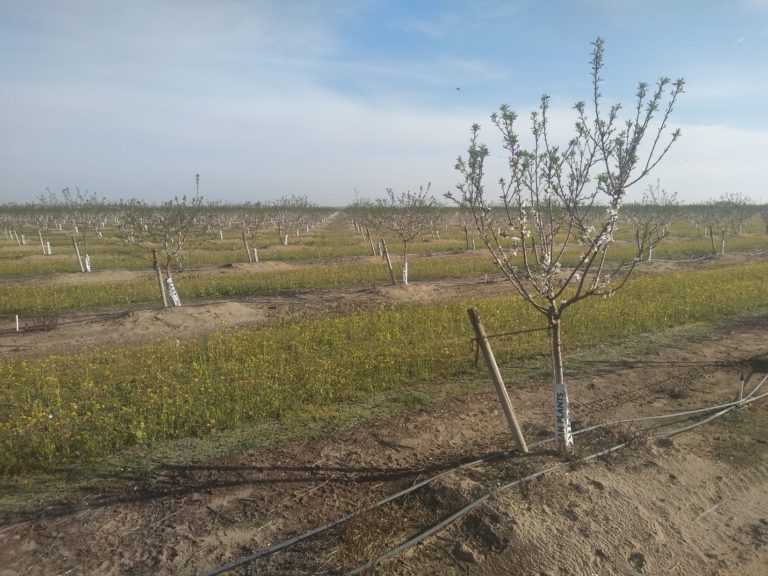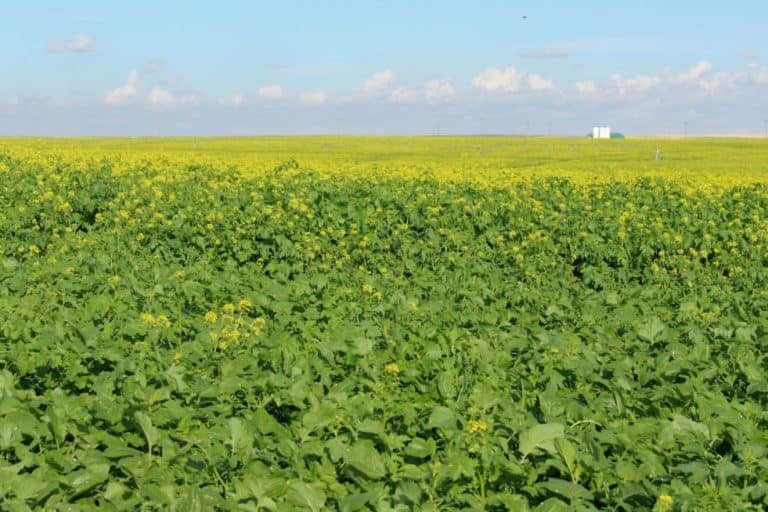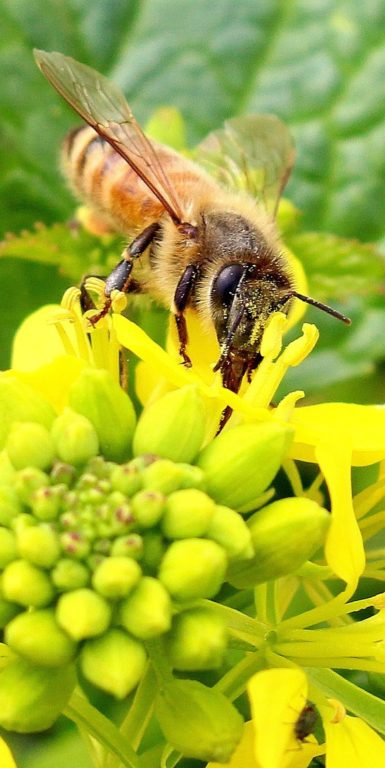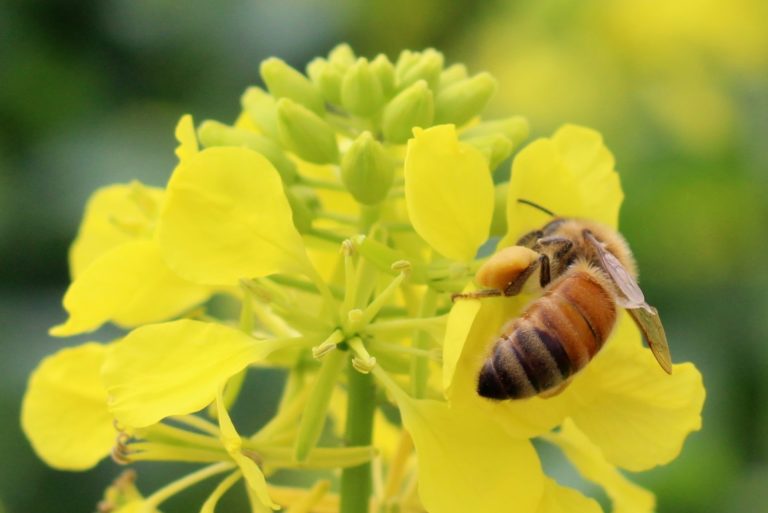Honey bees need an abundance and diversity of floral resources to grow and thrive throughout the season. In areas of intensive agriculture, like the almond orchards of California, forage can be scarce before and after the primary cultivated crop blooms. One of the pollinator friendly plants that is often seen in and around orchards and agricultural fields is mustard. The common appearance is due to both deliberate planting as a cover crop and the plant spreading through self-sowing.
There is a great deal of research going into developing cover crop seed mixes to supplement forage before and after almond bloom. Many of these seed mixes have a high proportion of mustard including the mustard mix from Project Apis m. In addition to providing forage and habitat for pollinators and other beneficial insects, cover crops can increase organic matter in soil, improve water retention, and limit erosion. It is not just almond growers that are adding cover crops between their rows; mustard blooming throughout the vineyards and walnut groves that also occupy the central valley of California has become an increasingly common sight in the early spring.

Photo: Dan Wyns
Mustards are members of the genus Sinapis within the Brassicaceae family. Brassicaceae was previously referred to by the family name Cruciferae, which references the cross-shaped 4 petal flower of plants within the family. In addition to mustards, the brassicas include a wide variety of edible vegetable and oilseed crops including cabbage, broccoli, cauliflower, kale, radish, turnip, and canola. The most commonly cultivated mustard in the United States is white mustard (Sinapis alba), sometimes also called yellow mustard. Mustards are annuals growing a few feet tall with pinnate leaves coming directly from the stem. The flowers are bright yellow with 4 petals at right-angles.
White mustard originated in the Mediterranean and is currently distributed globally. It is cultivated as both a cover crop and harvested for human consumption including prepared mustards (from seeds) and young greens. Outside of deliberate cultivation, the plant also grows in a wide variety of environmental conditions including roadsides and disturbed soils leading many locations to classify it as an invasive species. In a cultivated context the crop will bloom 6-8 weeks after planting, while wild plants typically bloom in the spring into the early summer with bloom lasting about a month. When it is sown in agricultural fields it is typically a fall crop intended to be incorporated into the soil as a green manure.

Photo: Dan Wyns
As far as a resource for honey bees, mustard is always a very welcomed sight to beekeepers and can provide significant resources to colonies when soil moisture is adequate. The nectar is attractive and easily accessible to honey bees. The resulting honey is typically light to yellow in color and can be prone to rapid crystallization like canola and other related plants. Often any accumulated nectar is left as winter stores for the bees but if it to be harvested it should be taken immediately after capping and extracted without delay to minimize issues with crystallization.

Photo: Dan Wyns
The pollen is abundant and foraging bees often have much of their heads and bodies covered by the golden dust. The nutritional content of the pollen is moderate, but it is often of great value to colonies when the availability of other blooms is limited. As a natural bloom it can be an important early component of nutrition for spring buildup and when cultivated it is often among the last available pollen prior to winter.

Photo: Dan Wyns
